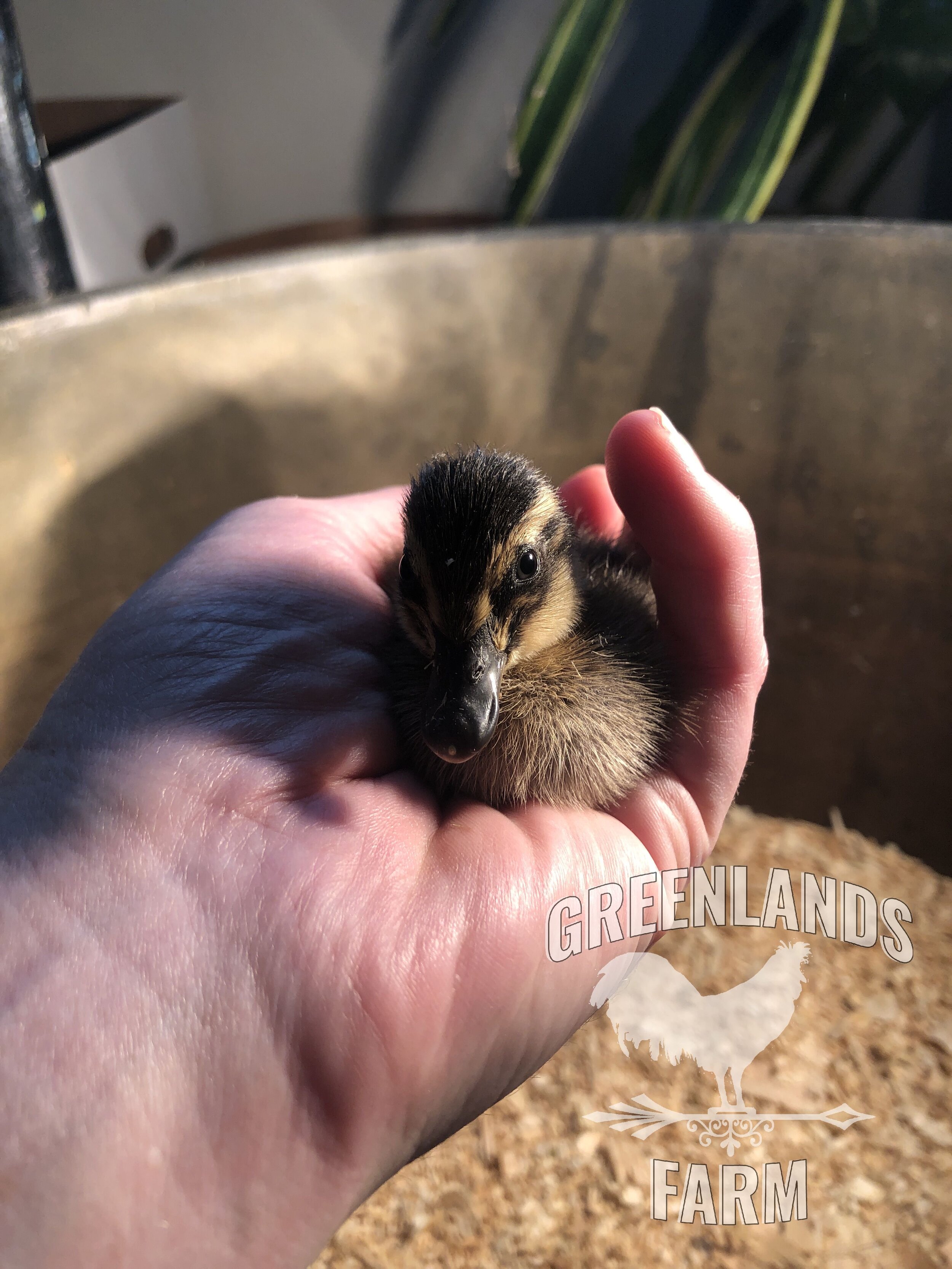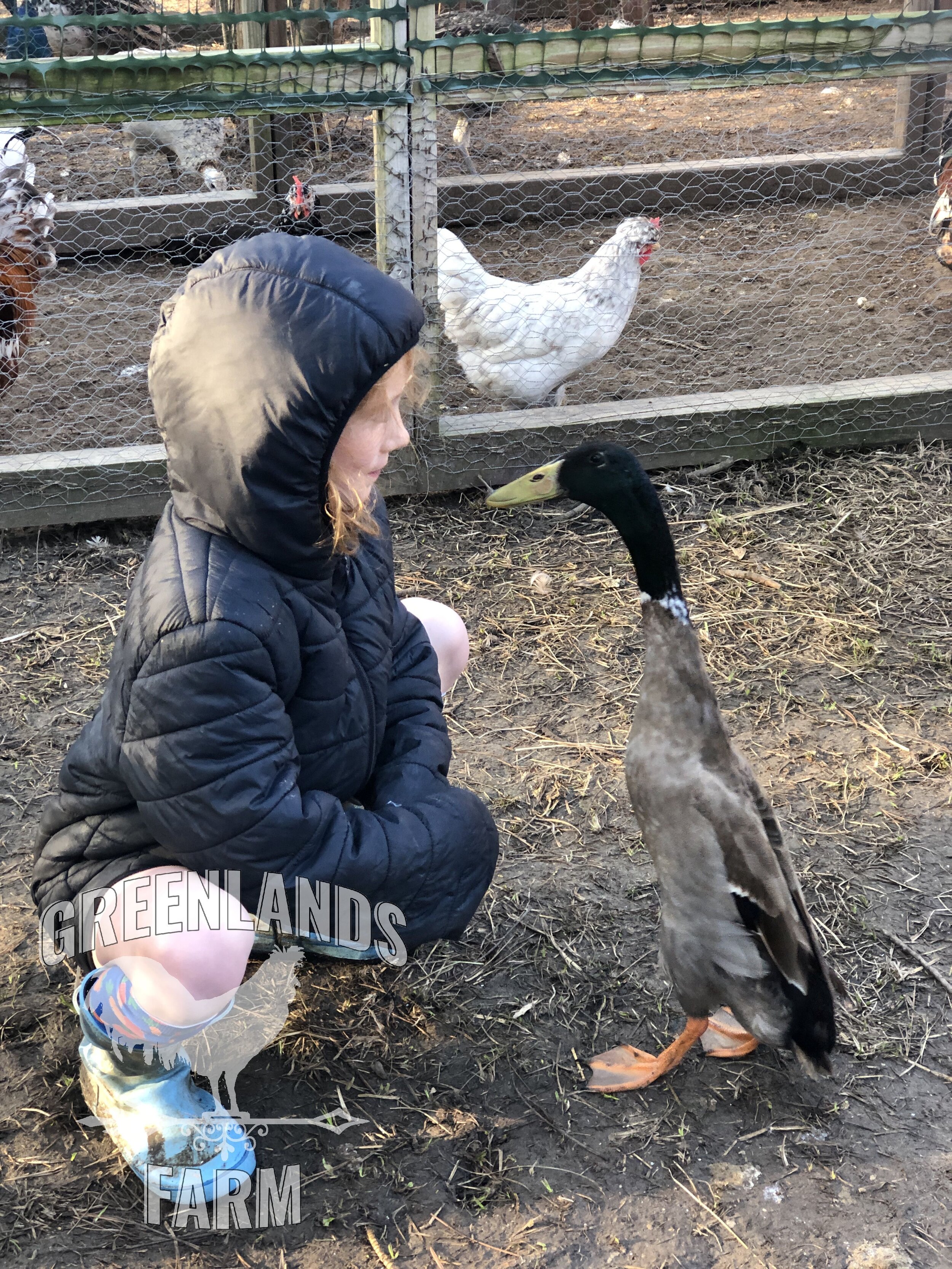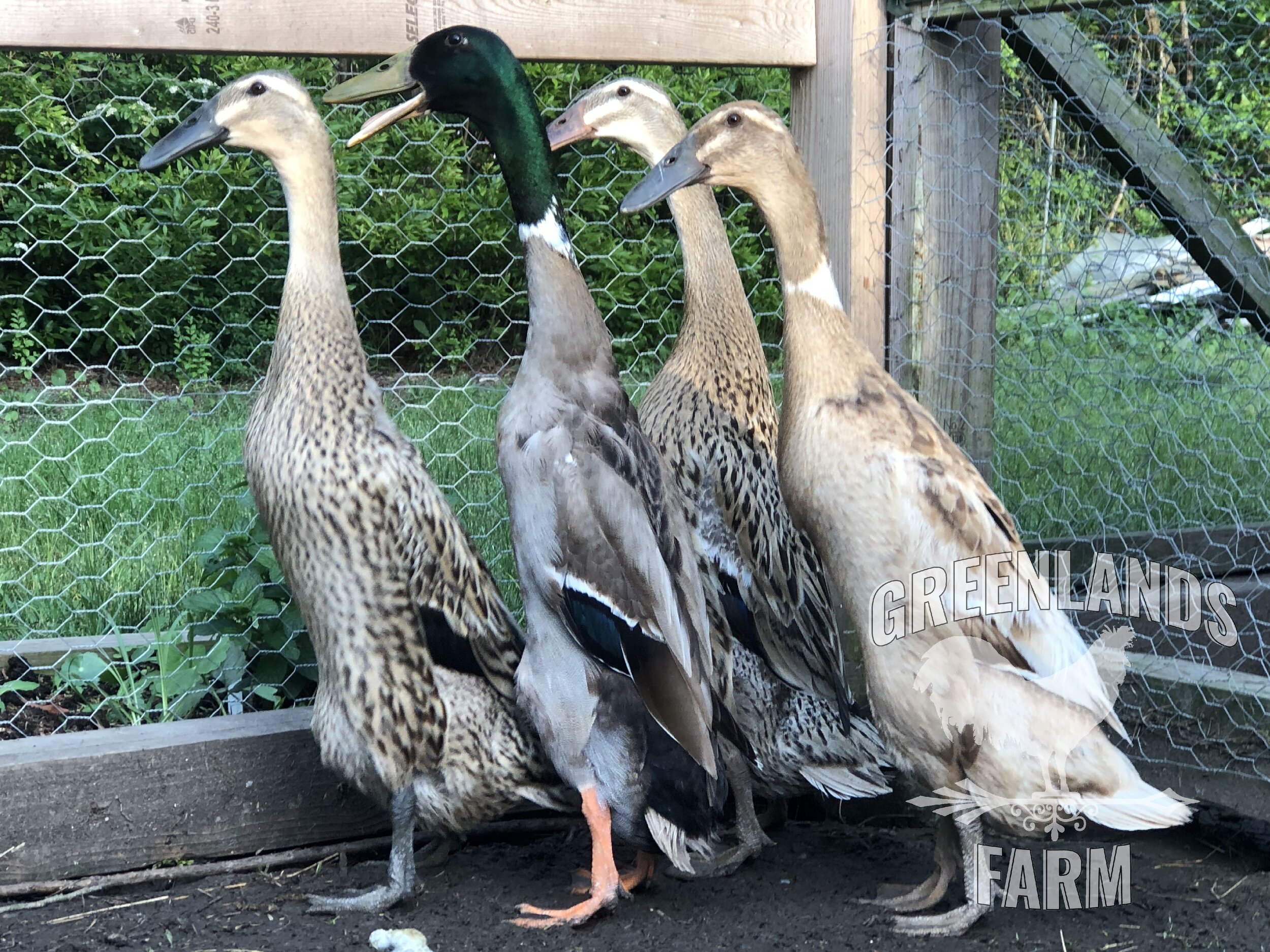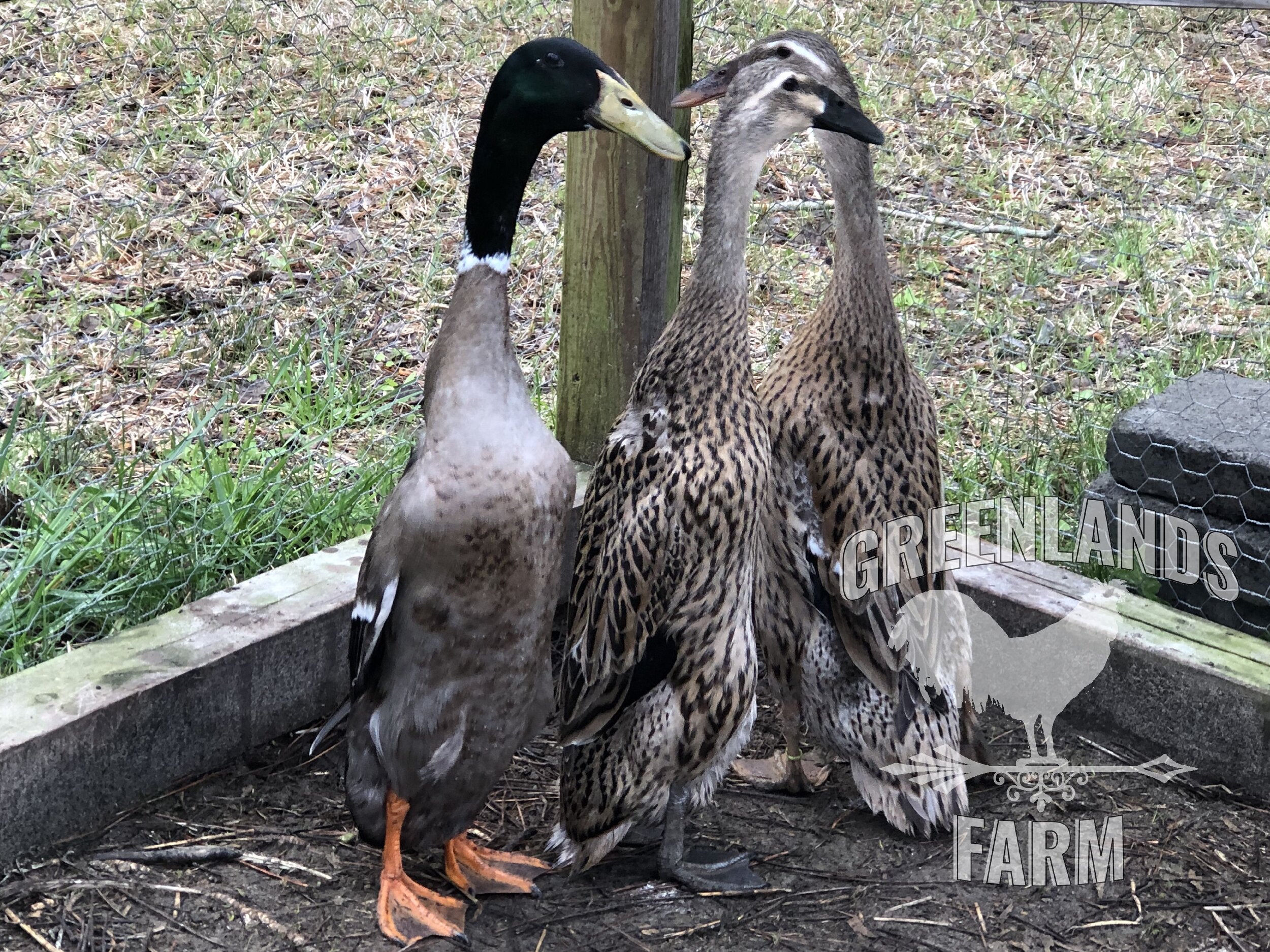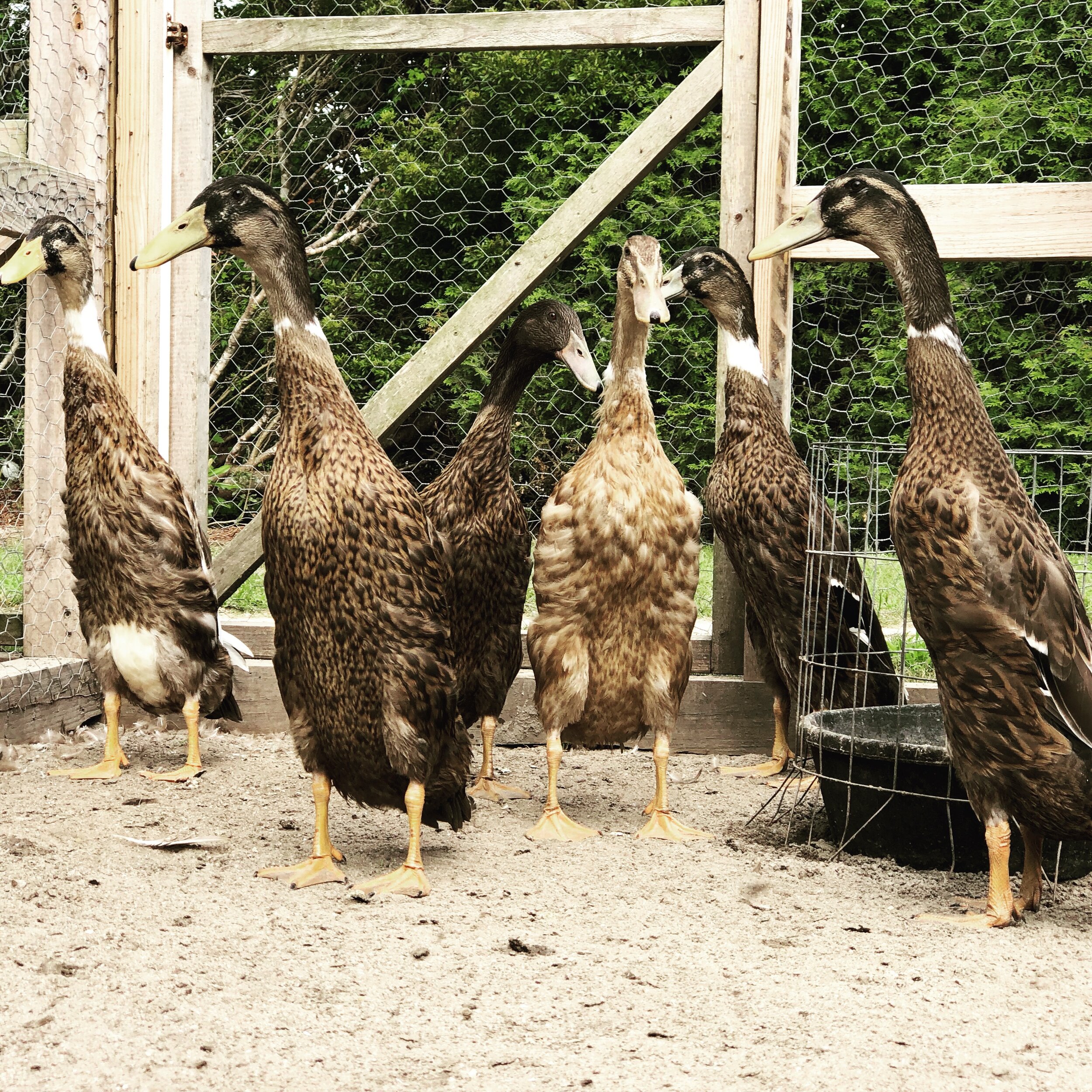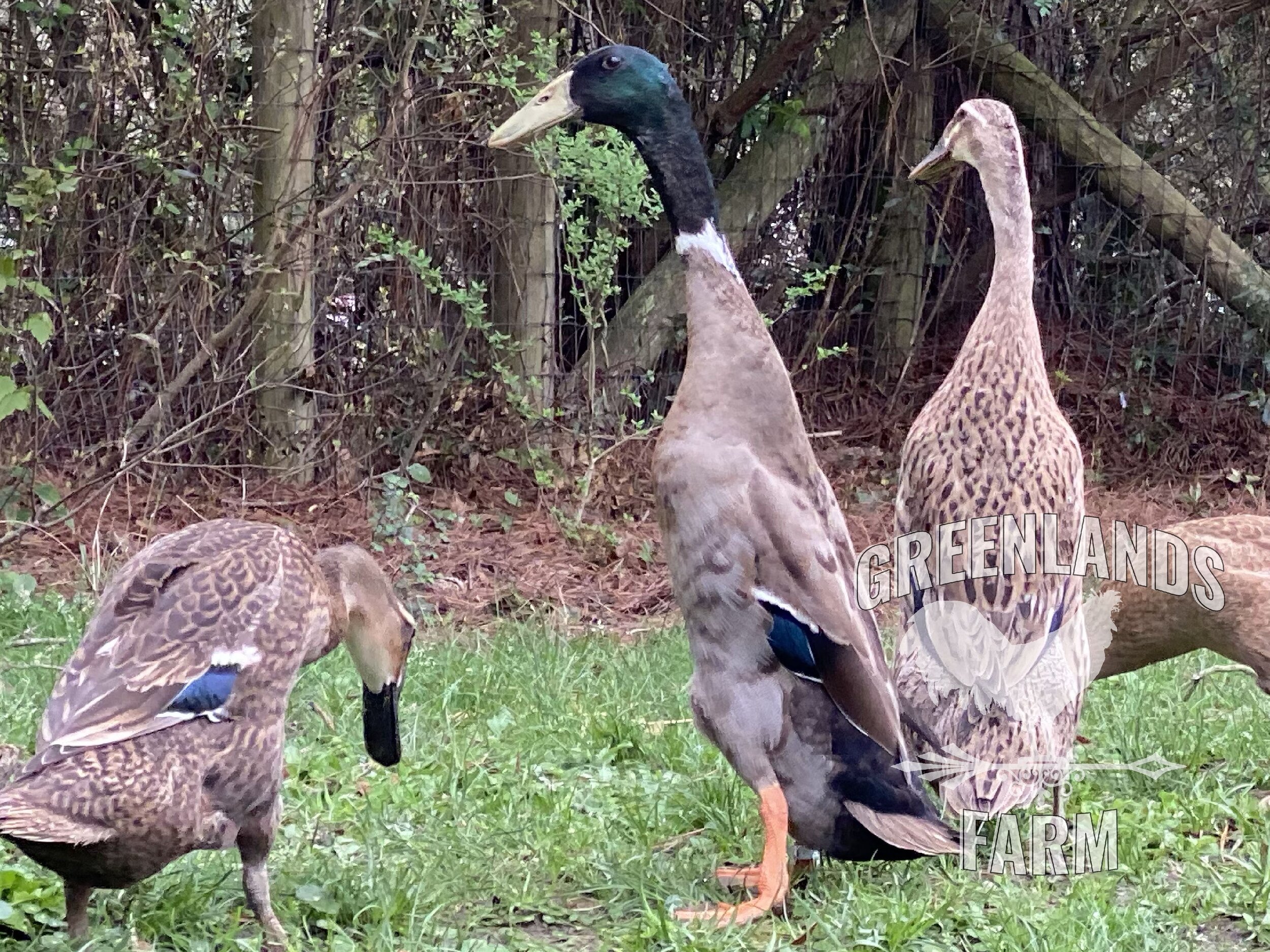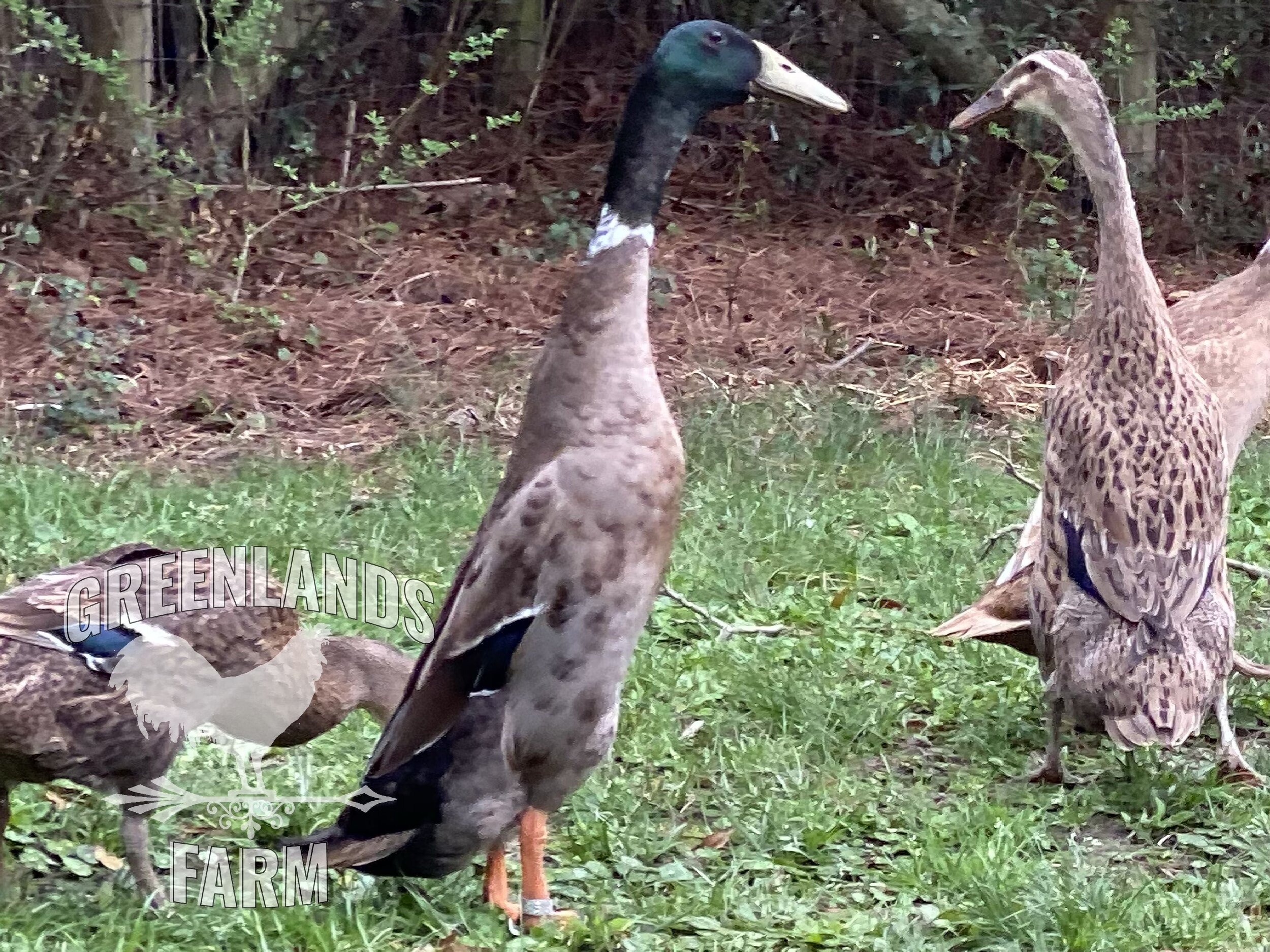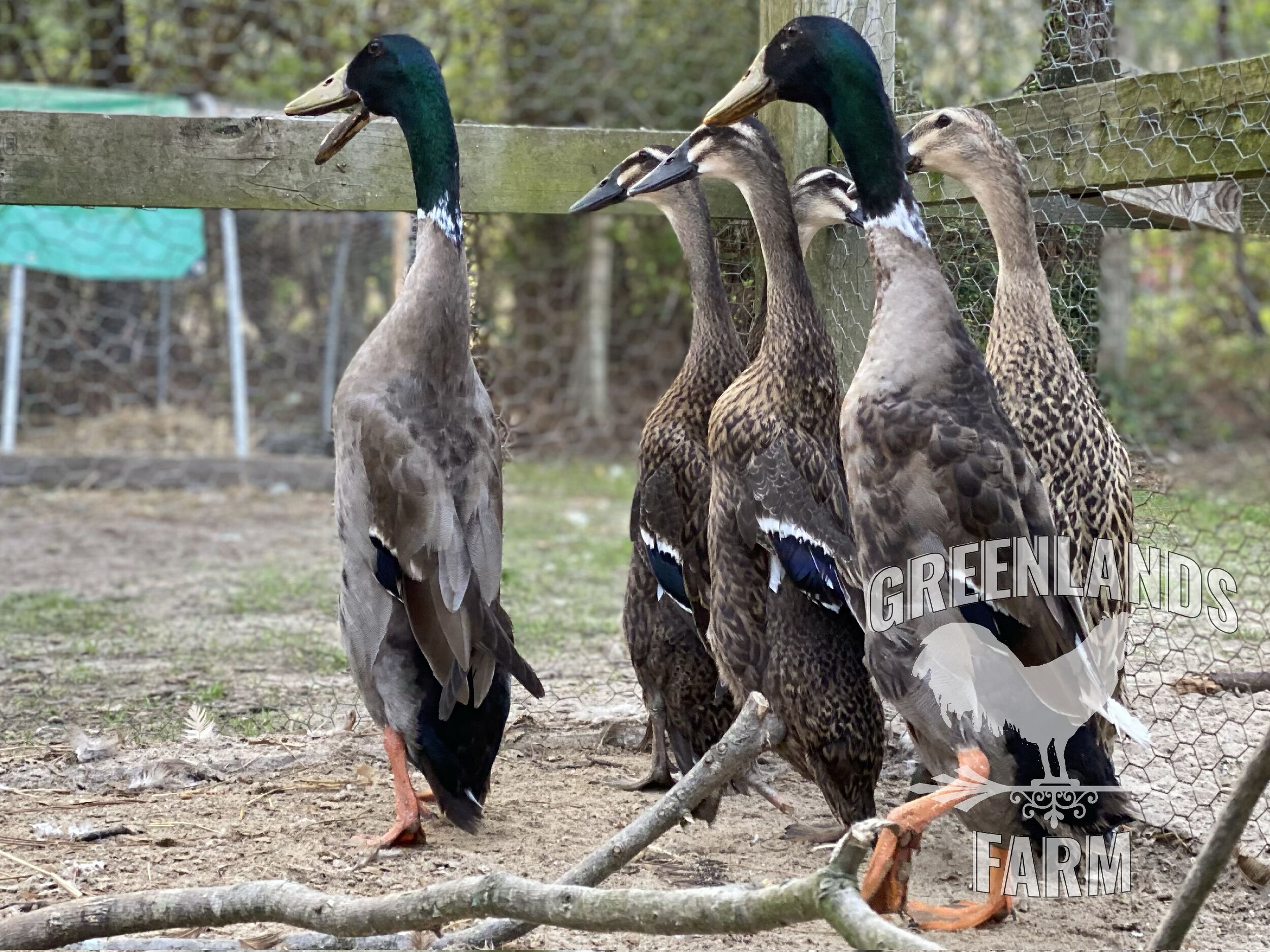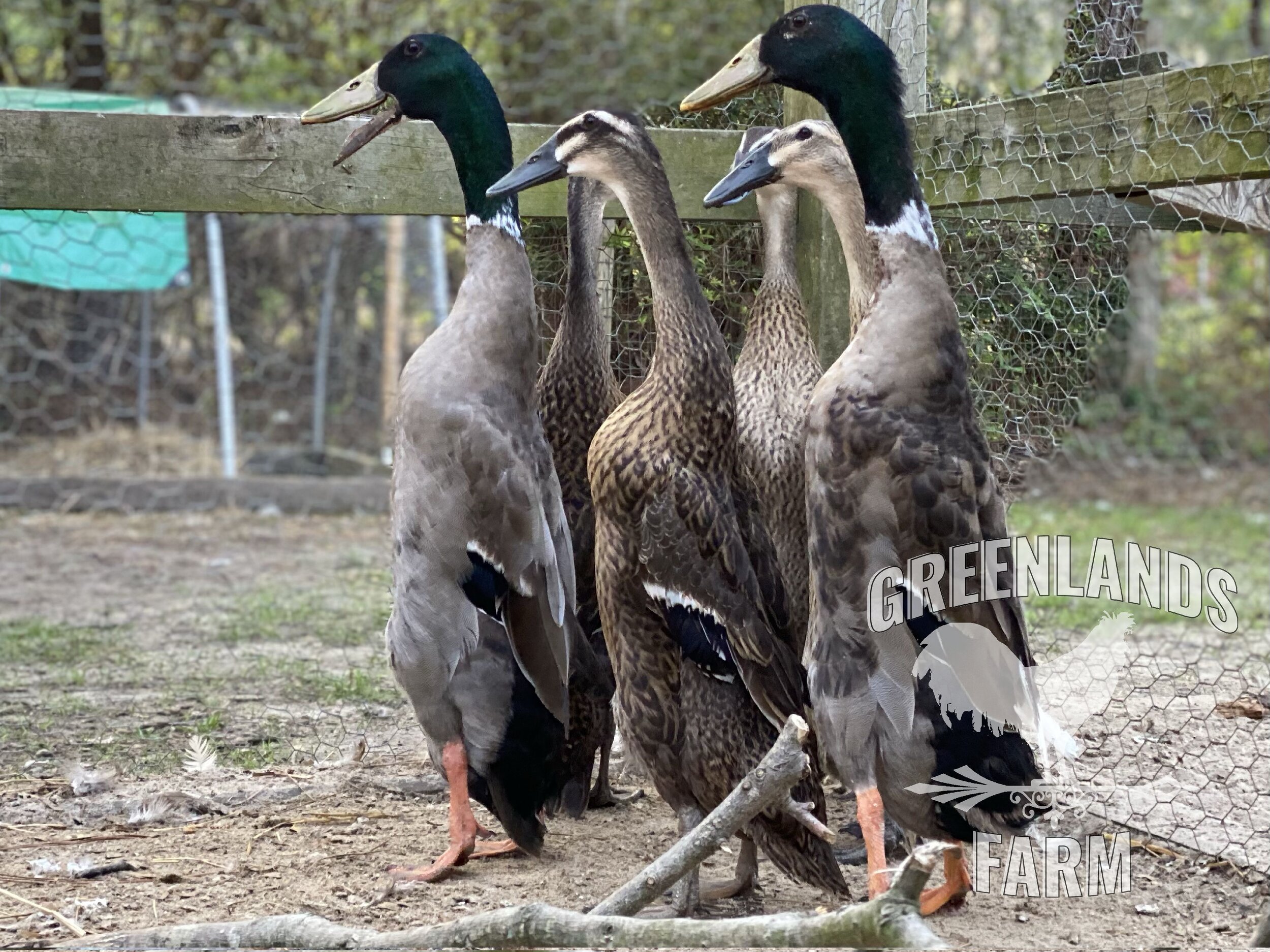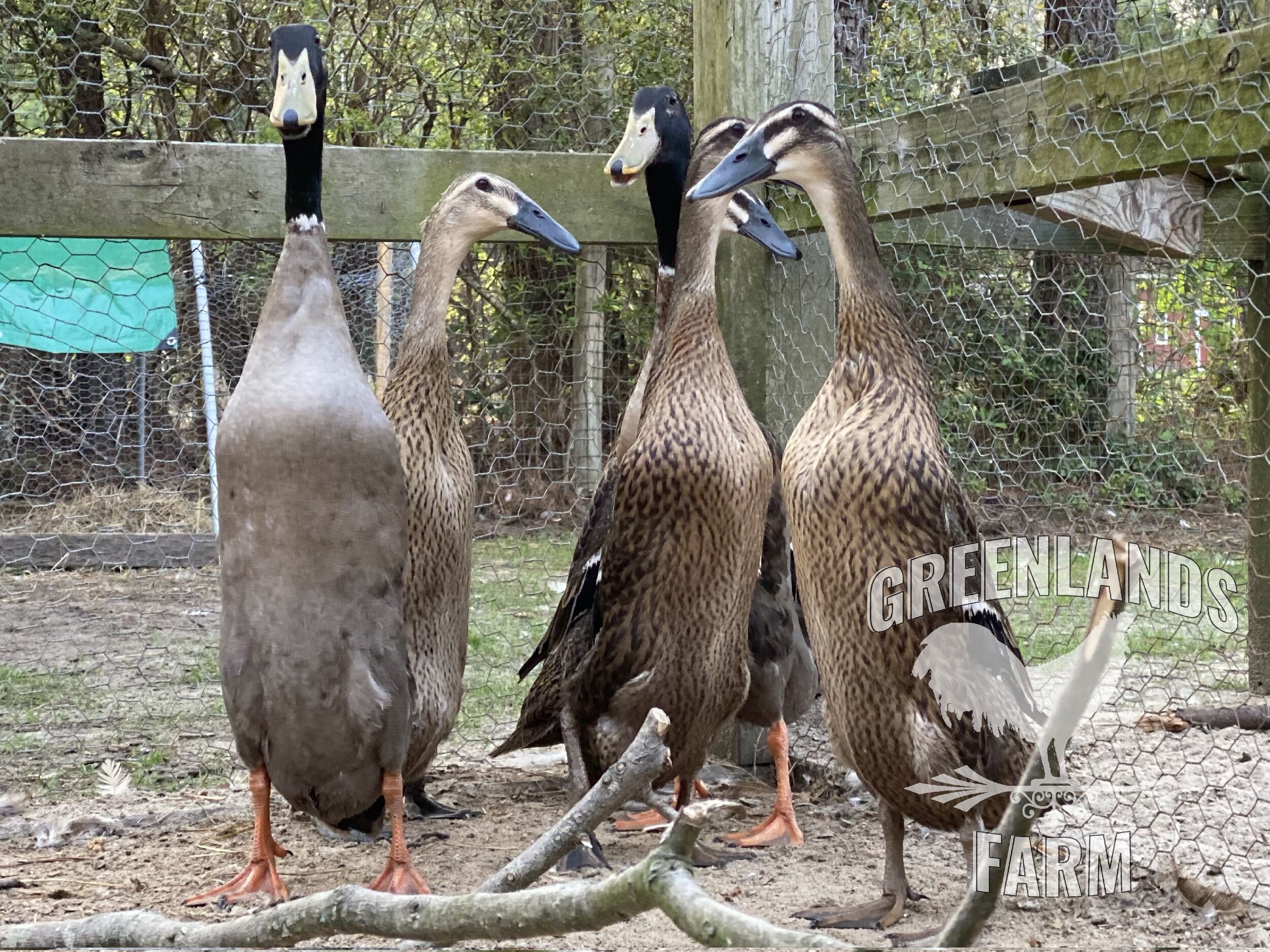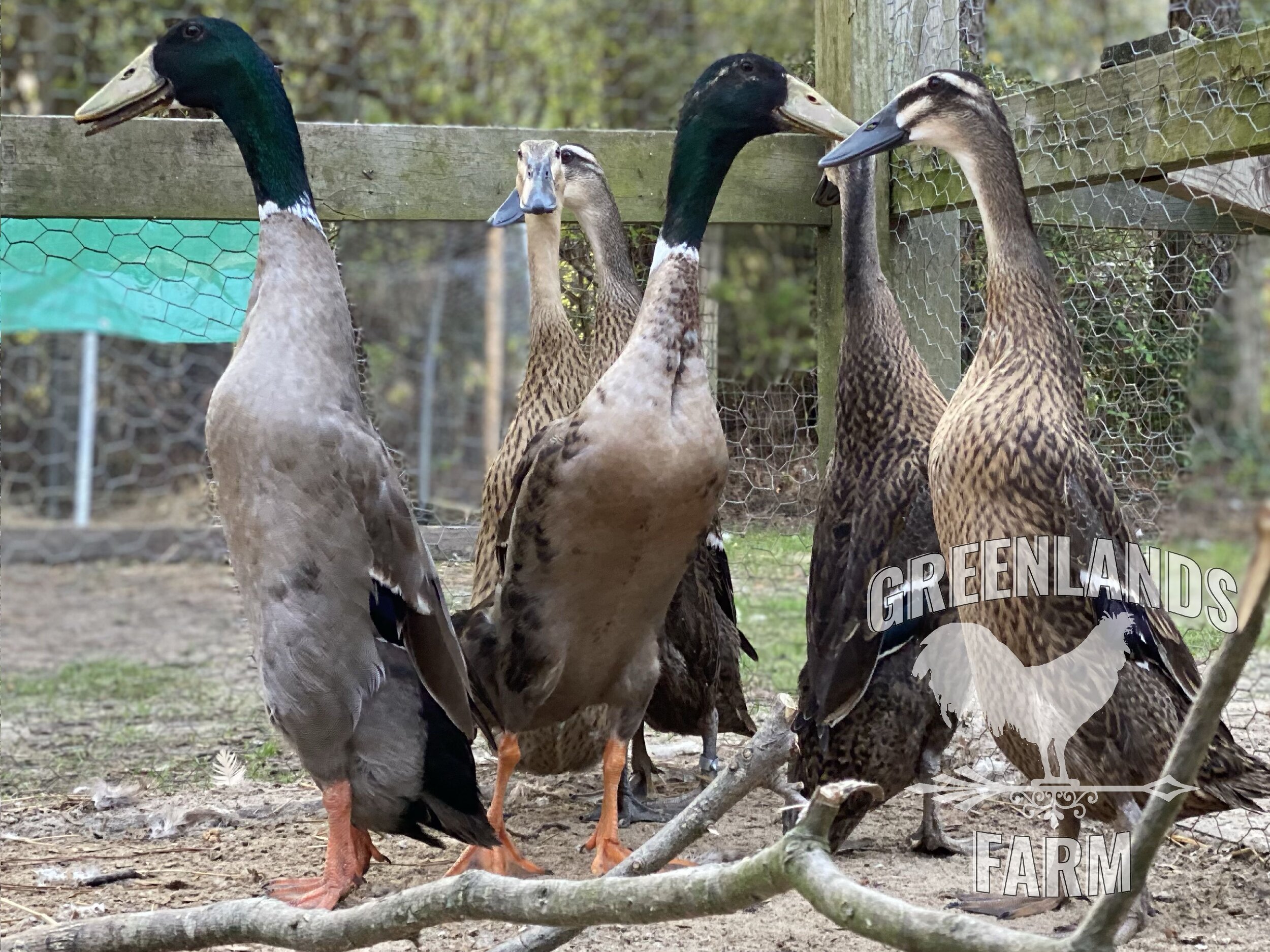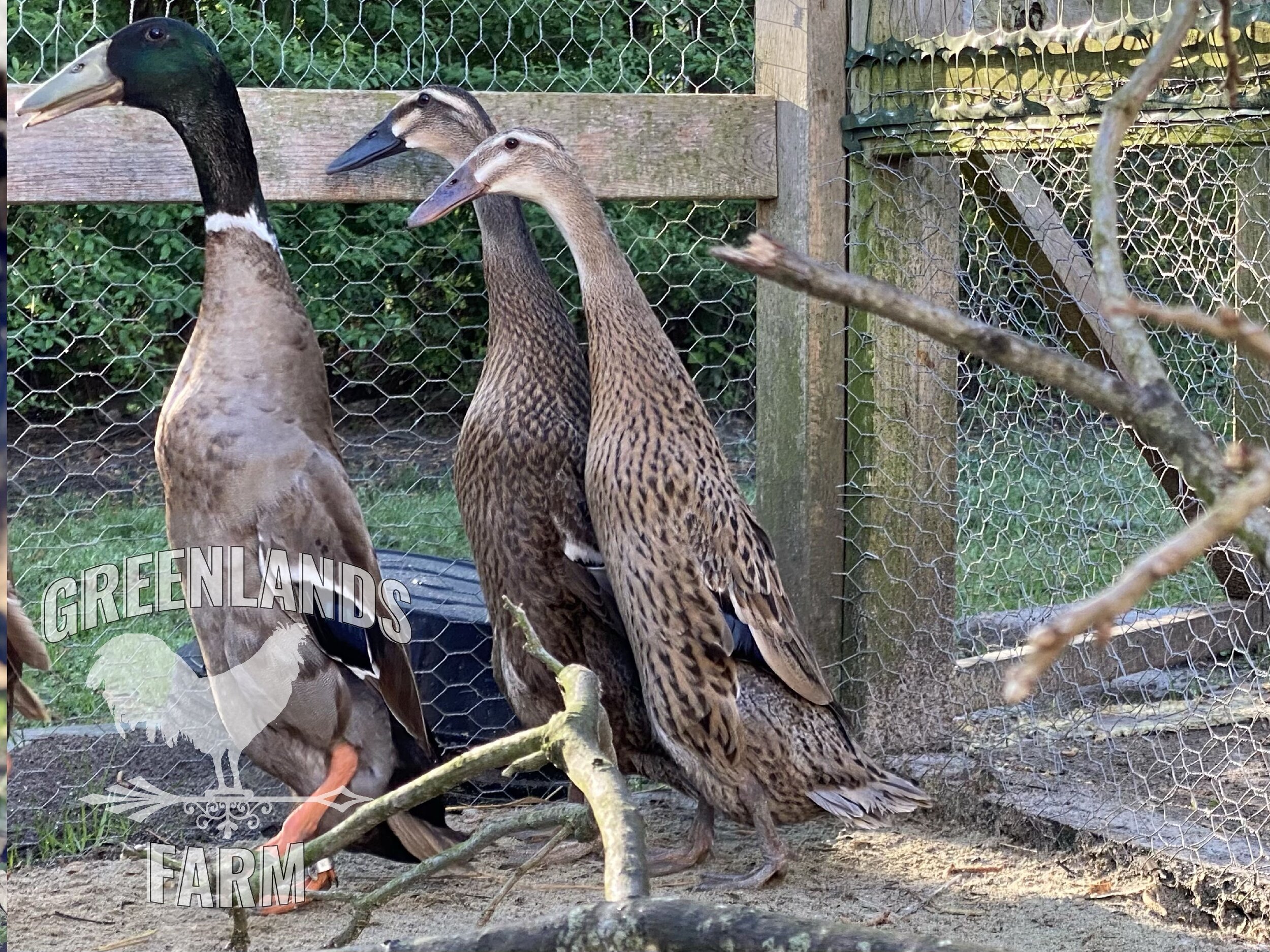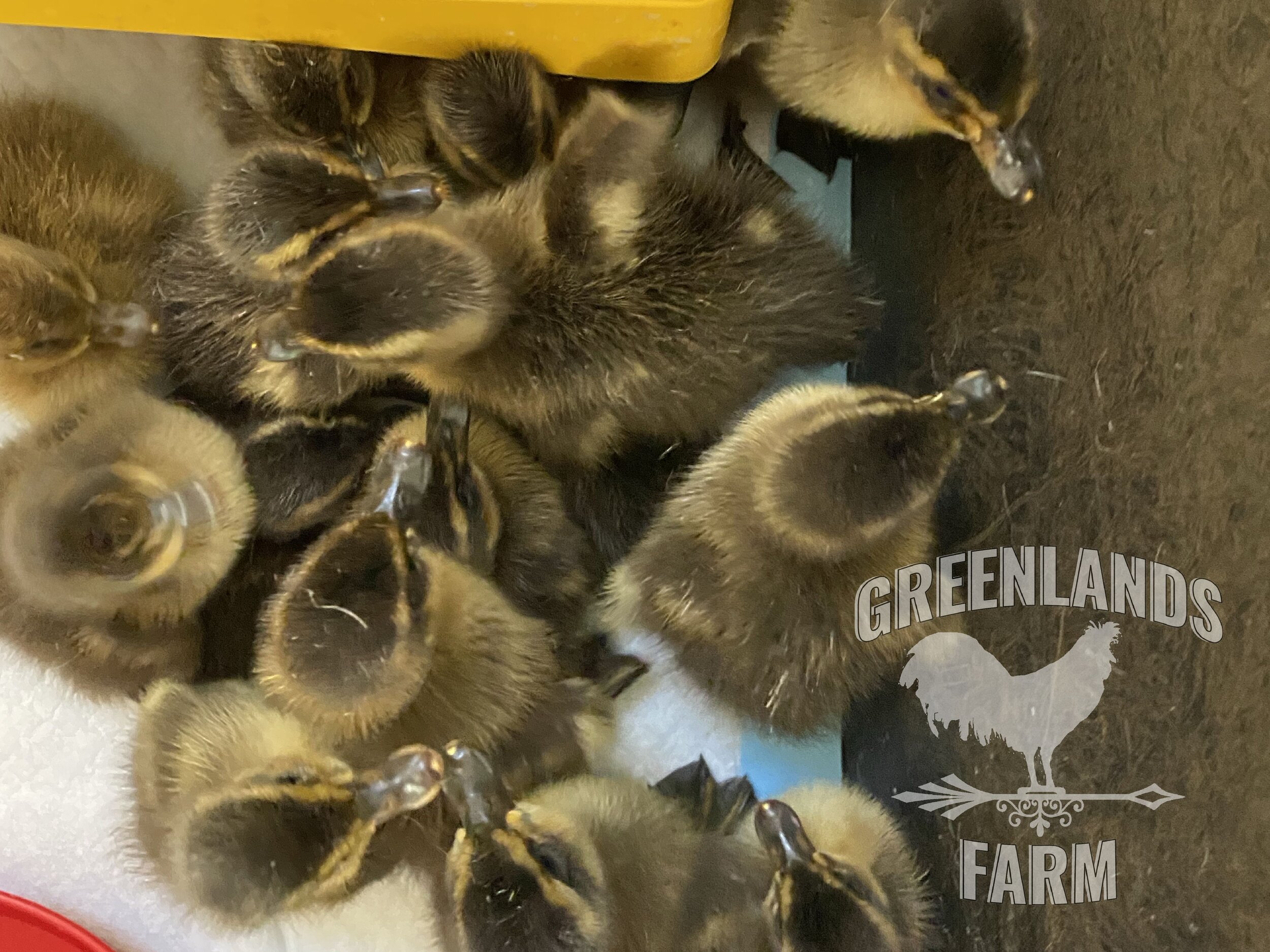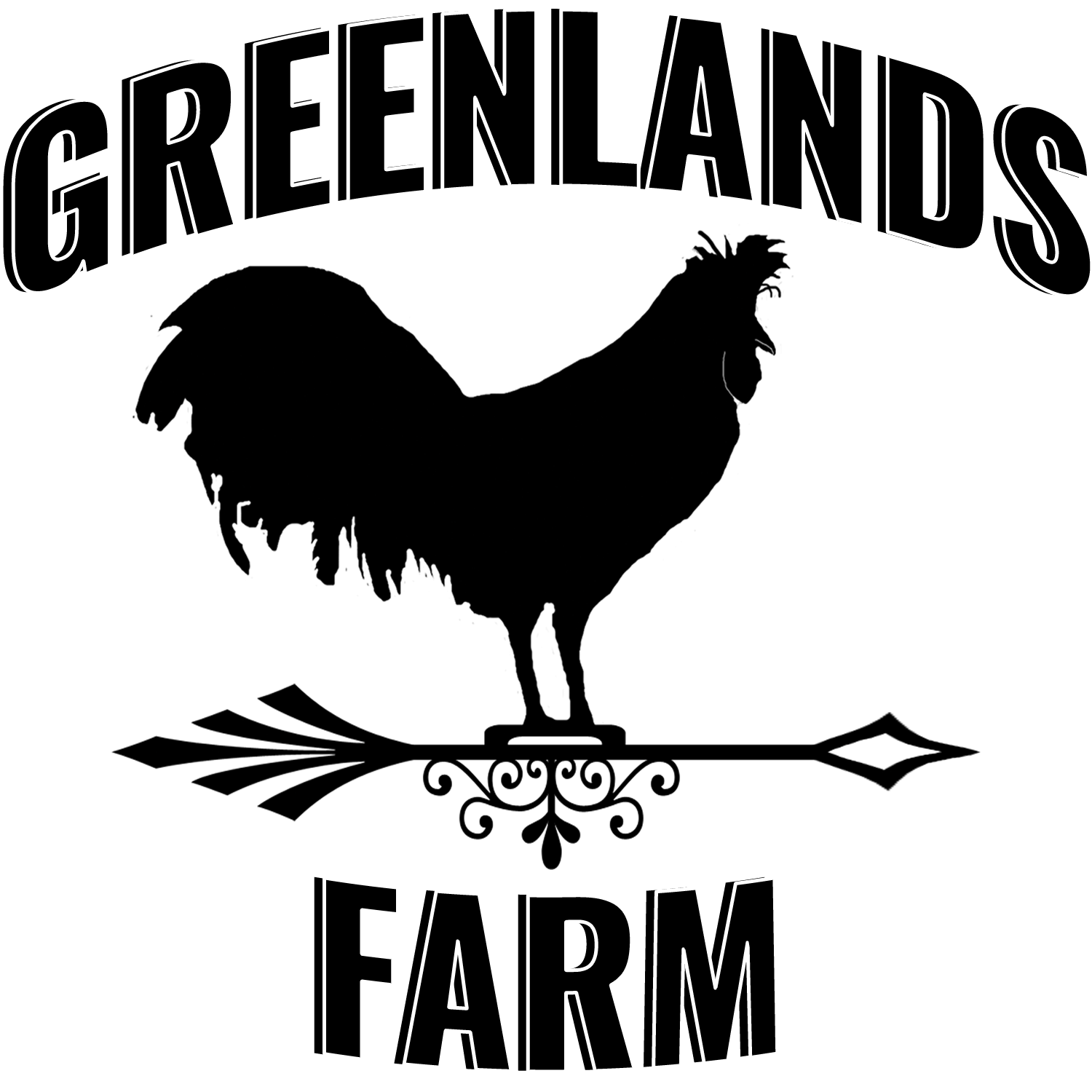Grey Mallard & Trout Indian Runner Duck
Grey Mallard Indian Runners is a rare and beautiful color. Indian Runners stand erect like penguins and, rather than waddling, they run. Runner ducks are prolific layers and good strains will lay in excess of 250 eggs a year. They are active foragers, seeking out snails, slugs, insects, and other goodies. They are happier spending most of their time foraging for food than being on water. Indian Runners are hardy birds with a timid nature but trainable as companions. They do well with being socialized after hatching but will still be easily excitable and will panic if cornered. The Grey Runner has traditional Mallard coloring, a rare and beautiful color. The drakes have green heads and grey and brown bodies, the hens have all brown bodies.
Greenlands Farm is a member of the National Poultry Improvement Plan (NPIP).
Our NPIP status is U.S. Pollorum-Typhoid Clean, AI Clean, and Salmonella Monitored.
HATCHING EGGS
Ordering Limit
Important: Please only select one listing per breed. If you would like more than what we have listed, please contact us to see if we are able to fulfill. We are a hobby farm and generally don’t have large flocks, but sometimes our layers produce more during certain seasons.
Your payment secures your spot in our shipping schedule. We fulfill orders in the order we receive them. Please understand there may be a wait list. Shipping choices are at checkout.
We are constantly working on the quality of our flocks. We have some Trout genes along with our Greys. The Trout colouration is caused by the light phased gene (li/li) turning the usually dark phase (L/L) Mallard/Grey (M/M L/L) into Trouts which are light phase mallard (M/M li/li). We’ve decided to keep with breeding both and continue to work on correct bill color. You may get some dark bills in hens. We also are working on chest size for both sexes.
LIVE BIRDS
(shipping not available)
We will be hatching in the Spring of 2023. If you’d like to place an order to get on our waitlist, please contact us and we will send you a custom listing.
History
The Indian Runner ducks are domesticated waterfowl that live in the archipelago of the East Indies. There is no evidence that they came originally from India itself. Attempts by British breeders at the beginning of the twentieth century to find examples in the subcontinent had very limited success. Like many other breeds of waterfowl imported into Europe and America, the term 'Indian' may well be fanciful, denoting a loading port or the transport by 'India-men' sailing ships of the East India Company. Other misnamed geese and ducks include the African goose, the black East Indian duck and the Muscovy duck.
The Runner became popular in Europe and America as an egg-laying variety towards the end of the nineteenth century largely as a result of an undated pamphlet called The India Runner: its History and Description published by John Donald of Wigton between 1885 and 1890. Donald's publication is advertised briefly in The Feathered World, 1895, under the title of "The Indian Runner Duck". Donald describes the pied variety and gives the popular story of the importation into Cumbria (Northwest England) by a sea captain some fifty years earlier.
The breed is unusual not only for its high egg production but also for its upright stance and variety of color genes, some of which are seen in seventeenth century Dutch paintings. Other references to such domestic ducks use the names 'Penguin Ducks' and 'Baly Soldiers'. Harrison Weir's Our Poultry (1902) describes the Penguin Ducks belonging to Mr Edward Cross in the Surrey Zoological Gardens between 1837–38. These may well have been imported by the 13th Earl of Derby. Darwin describes them (1868) as having elongated 'femur and meta-tarsi', contrary to Tegetmeier's assertions.
The Cumbrian importations, according to Matthew Smith in 1923, included completely fawn Runners and completely white Runners as well as the pied (fawn-and-white and grey-and-white) varieties. The most successful attempt to import fresh blood lines was by Joseph Walton between 1908 and 1909. Accounts of these ventures can be found in Coutts (1927) and Ashton (2002). Walton shipped in birds from Lombok and Java, revolutionizing the breeding stock which, according to Donald, had become badly mixed with local birds. Further importations by Miss Chisholm and Miss Davidson in 1924 and 1926 continued to revive the breed.
